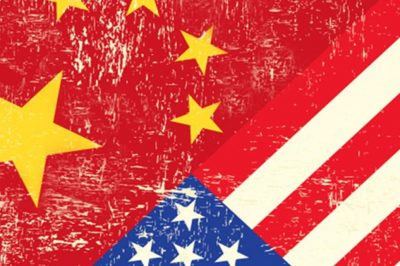It’s critical to comprehend the underlying dynamics influencing these two titans’ United States and China relationships as the world observes them negotiate their responsibilities on the international scene.
China and the United States: A Prolonged Conflict
In recent decades, the United States has ceased to be the sole international superpower. China has emerged as a formidable player with its rising wealth, prestige, and military might. The long-term competition between these nations mirrors the Cold War era rivalry between the United States and the Soviet Union. To grasp the essence of this ongoing confrontation, we must recognize three key factors:
China and the United States: A Prolonged Conflict
In recent decades, the United States has ceased to be the sole international superpower. China has emerged as a formidable player with its rising wealth, prestige, and military might. The long-term competition between these nations mirrors the Cold War era rivalry between the United States and the Soviet Union. To grasp the essence of this ongoing confrontation, we must recognize three key factors:
China’s Unabated Economic Growth: There are no indications that China’s military or economic rise would slow down. Its steadfast dedication to modernization is embodied in the ideas of qiangqilai (becoming strong), fuqilai (becoming rich), and Zhanqilai (standing up).
U.S. Determination: Bipartisan resolve in the United States aims to prevent China from surpassing it. In 2021, President Biden asserted that China would not overtake the U.S. during his tenure.
Competitive Relationship: The U.S. administration perceives China as its greatest current threat. While President Biden emphasizes multilateral operations, tensions persist. Trade wars, technological disputes, and military maneuvers underscore this complex relationship.
Trade tensions between the two countries persist, with issues such as tariffs, intellectual property rights, and market access remaining contentious. Both sides have engaged in negotiations and imposed tariffs on each other’s goods, leading to fluctuations in global markets.
There is intense competition in emerging technologies such as artificial intelligence, 5G, and quantum computing. The U.S. has raised concerns about Chinese companies’ access to sensitive data and technologies, leading to measures such as export controls and restrictions on Chinese tech firms like Huawei.
Both countries have increased military capabilities and activities, particularly in the Indo-Pacific region. The U.S. has bolstered its presence through freedom of navigation operations and military exercises, while China has modernized its military and expanded its maritime presence, including in the South China Sea.
Also Read: Environmental challenges redefine state sovereignty in global politics
Two Rising Power Groups
The U.S. maintains a network of alliances and partnerships in the region, while China’s Belt and Road Initiative (BRI) aims to expand its economic and strategic influence.
Two emerging power groupings are present on the global scene today:
Coalition Led by the United States: This alliance supports the U.S. and comprises the QUAD, AUKUS, NATO, and other industrialized nations.
China-Russian Bloc: This bloc, which is led by China and Russia and includes certain emerging countries (such as the members of the BRICS and the Shanghai Cooperation Organization), opposes the status quo.
The United States does not want “a new cold war” with China, notwithstanding President Biden’s statement to that effect. Deepening ideological and geopolitical fault lines affect the military and economic facets and the global discourse on strategy.
Consequences Beyond Status and Power
Beyond economic and military aspects, domestic factors play a crucial role in the U.S.-China rivalry. Kiron Skinner, former Director of Policy Planning for the U.S. Department of State, highlighted that China is the first great power competitor not of Caucasian origin. This dimension adds complexity to the dynamics, influencing perceptions and actions on both sides.
In last, the power relations between the United States and China are complex and have ramifications that go well beyond their boundaries. The world watches as these titans compete for power, knowing that their actions will determine the path history takes.

I am Bushra Tahir. Doing BS in International Relations from National University Of Modern Languages ( NUML).








